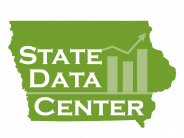Redistricting Data Program and Iowa Redistricting
After the "one-person, one-vote" court decision in the 1960s, Congress enacted Public Law 94-171 to provide state legislatures with small-area census population totals for legislative redistricting. In Iowa, PL94-171 census counts are used to draw new boundaries for precincts and for congressional, legislative, supervisor, ward, and school board director districts.
Census Bureau's Redistricting Data Program
The Census Bureau's Redistricting Data Program has three phases every decade.
- In Phase 1, Block Boundary Suggestion Project, state officials suggest visible ground features to be used by the Census Bureau to design census block. Population totals for blocks can be added to obtain totals for the voting districts.
- In Phase 2, Voting District Project, states report the boundaries of existing voting districts to the Census Bureau. Census population totals are prepared for each designated voting district.
- In Phase 3, Data Delivery Project, all state legislatures and governors receive Census population totals, broken down by major race groups and Hispanic origin, for the total population and for persons age 18 years and older. All states receive these data for standard tabulation areas, e.g., county, city, census tract, and for each census block.
Redistricting in Iowa
The Legislative Service Bureau is responsible for:
- Responsible for drawing Iowa's congressional and legislative district boundaries
- Iowa's liaison for the block boundary suggestion program and redistricting data plan.
Local governments are responsible for:
- Drawing boundaries for precincts and for supervisor, wards, and school board director districts, subject to approval by the Iowa Secretary of State.
-
2020 Redistricting Data and Maps
More Information
For information about the Census Bureau's redistricting data program, see:
For information about redistricting in Iowa, see
